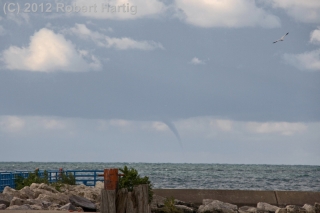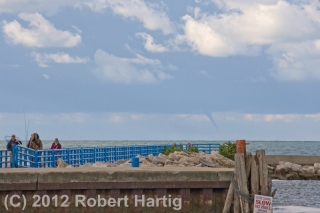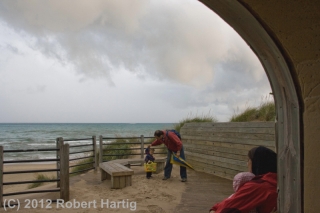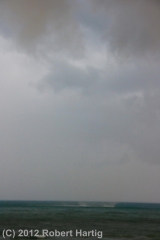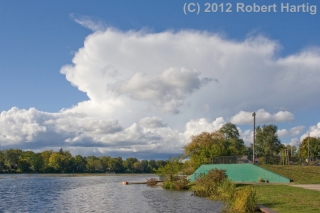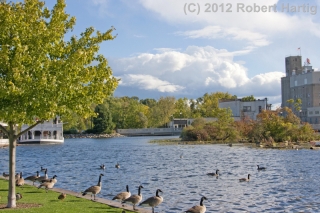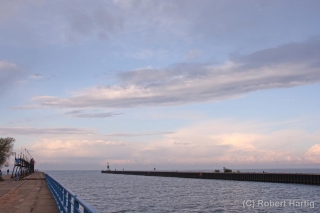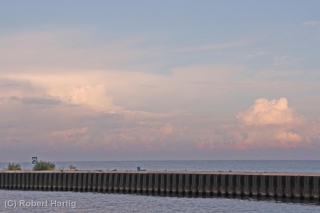When I saw the clouds this afternoon, I couldn’t help but wonder. Lisa and I were catching a late lunch–or an early dinner, take your pick–at the Fire Rock Grille, and I was staring out the window over the golf course at low-topped convective towers to my northwest. The sky had that look about it that spoke of stripped-out moisture and cold mid-level temperatures, as you begin to expect around this time of year, and I thought, “If those towers were over Lake Michigan, there’d be a waterspout hanging from one of them.”
My first successful waterspout chase last year led me to believe that when conditions are right for spouts–when cold air moving over warm lake waters creates steep low-level lapse rates and enough vorticity is present to get stretched by an updraft–then the main thing to do is get one’s butt down to the lakeshore and look for convective bands. Maybe I’m being overly simplistic; regardless, September 22, 2012, made me a believer in the feasibility of viewing Lake Michigan waterspouts. I even managed to get some shaky but very cool video that day of a spout making landfall about one hundred yards north of me.
My instincts today proved right, but the action occurred on the other side of the pond, where some spectacular photos and video came from lucky beachcombers in Kenosha, Wisconsin. I normally avoid embedding YouTube videos in my posts because I never know how long one will remain viable, but I’m displaying this one by Jeff Magno because I find it particularly intriguing.
Not only is the distant spout massive at this point, but look at how the mist rising off of the sidewalk in the foreground forms a tracer for the surface winds. The mist rushes southward, consistent with today’s northerly flow, but where it rises, you can see it begin to move lakeward. It dissipates far too quickly to tell much of a story, but it leads me to speculate about the low-level vertical vorticity that may have been available to produce the spouts.
But then, what do I know about these things? I’m just a happy observer when I get the chance to be one–which, as it turns out, may be tomorrow morning. Got a hot tip on that, so I’m setting my clock and planning to wake up early, and tonight I will dream of near-shore convection.
